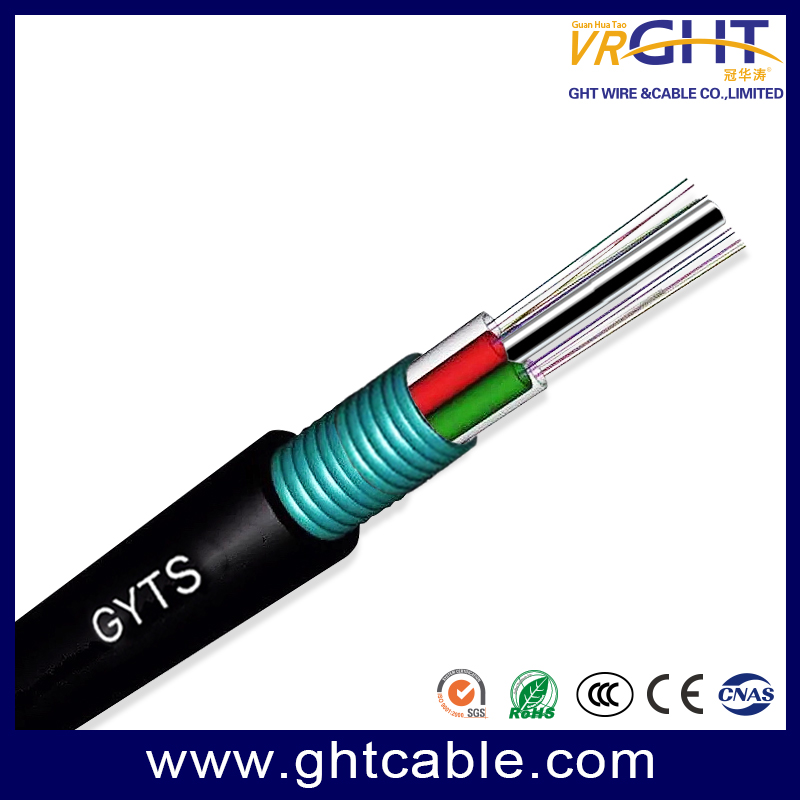
Coaxial vs Fiber Optic: Which Cable Should You Buy for Your Project?
When it comes to planning a new communication, networking, or surveillance project, one of the most critical decisions is selecting the right cable. Two of the most widely used options in the market today are coaxial cables and fiber optic cables. While both are designed to transmit data, their internal structure, performance, cost, and application differ significantly.
In this article, we will guide you through the key differences between coaxial and fiber optic cables from a buyer's perspective, helping you choose the most suitable option for your specific project. Whether you're building a residential system, a commercial network, or an industrial solution, making the right choice will impact the overall performance and cost-effectiveness of your installation.
What is a Coaxial Cable?
A coaxial cable is a type of copper cable specially designed to transmit high-frequency signals. It consists of a central conductor, an insulating layer, a metallic shield, and a protective outer jacket. These layers help to reduce interference and maintain signal integrity. Coaxial cables are commonly used in applications such as cable TV, CCTV, and some types of internet connections.
Different grades of coaxial cable serve various purposes. For example, RG6 is commonly used for TV and internet, RG59 is popular for analog CCTV, and RG11 is suited for long-distance or high-frequency applications.
What is a Fiber Optic Cable?
Fiber optic cables, on the other hand, use thin strands of glass or plastic to transmit data as light signals rather than electrical currents. This makes them faster, more secure, and capable of covering much longer distances with minimal signal loss. Fiber optic cables are now widely adopted in data centers, telecommunications networks, and industrial automation.
There are two main types of fiber optic cables: single-mode fiber, which is ideal for long-distance high-bandwidth applications, and multi-mode fiber, which works well for shorter distances and is typically more cost-effective for local area networks.
Comparing Speed and Bandwidth
From a performance standpoint, fiber optic cables are far ahead of coaxial cables. Fiber can support extremely high data transfer rates, ranging from gigabit speeds to 100G and beyond, depending on the equipment used. Coaxial cables, while still useful, are generally limited to lower bandwidths. In many modern installations, coaxial may support up to 1 Gbps, but performance can degrade over longer distances.
If your project demands high-speed data transmission, low latency, and future-ready infrastructure, fiber optic is the superior option. However, for simpler applications such as analog video or short-distance broadband, coaxial may still serve the purpose well.
Transmission Distance and Signal Integrity
One of the biggest advantages of fiber optic cables is their ability to transmit data over long distances without degradation. Single-mode fiber can transmit clean signals for tens of kilometers without the need for amplification. Coaxial cables, by contrast, are much more limited and usually require signal boosters after a few hundred meters.
Additionally, fiber optics are immune to electromagnetic interference (EMI), which is especially important in industrial environments where power equipment or heavy machinery is in use. Coaxial cables are more susceptible to EMI, which can lead to signal loss or noise.
Installation and Maintenance
From a buyer's standpoint, installation complexity is an important factor. Coaxial cables are easier to install and don't require specialized tools. If your technicians are already familiar with them, installation costs and labor time may be lower.
Fiber optic cables, while more delicate and complex to terminate, offer long-term benefits with lower maintenance needs. Once installed correctly, fiber cables are more resistant to environmental factors, corrosion, and aging, which means fewer disruptions over time.
That said, installation of fiber optics typically requires more skilled labor, special connectors, and precise handling. For this reason, it's important to weigh your upfront installation budget against your long-term operational costs.
Cost Considerations
Price is always a key consideration when choosing cable types. Generally, coaxial cables are less expensive to purchase and install, making them a good choice for smaller-scale or short-term projects. Fiber optic cables, while more expensive upfront, often provide better value over time due to their superior performance, lower signal loss, and reduced maintenance.
If your project is cost-sensitive and doesn't require ultra-fast speeds or long transmission distances, coaxial cables may be sufficient. However, for mission-critical systems, cloud-based platforms, or expanding enterprise networks, fiber optic cables represent a long-term investment in scalability and reliability.
Application-Specific Recommendations
Your choice should ultimately be guided by your specific use case. For CCTV systems using analog video, coaxial cables like RG59 are still a reliable and simple choice. For high-speed internet, data center connections, and backbone networks, fiber optic is essential. In scenarios where future bandwidth needs are uncertain, choosing fiber gives you the flexibility to scale without replacing infrastructure.
If you're unsure which type of cable best suits your application, a reliable supplier like VRGHT can offer tailored recommendations based on your technical requirements and project budget.
Planning for the Future
With the increasing demand for cloud computing, smart building systems, and 5G technologies, fiber optics are becoming the industry standard. Many buyers today are choosing to invest in fiber infrastructure not just for current needs, but for the ability to upgrade networks without major overhauls in the future.
That said, coaxial cables will continue to be relevant in many applications, especially where legacy systems or specific transmission protocols are in use.
Why Choose VRGHT as Your Cable Supplier?
If you're in the market for high-quality cabling solutions, VRGHT offers an extensive range of both coaxial and fiber optic cables designed to meet diverse project demands. We provide:
- Strict quality assurance with certifications such as ISO, CE, and RoHS
- Competitive pricing for bulk cable purchases
- Fast delivery and excellent after-sales support
- Expert technical assistance to help you choose the right cable type
Whether you are sourcing materials for a construction project, a telecom deployment, or a corporate network upgrade, VRGHT is your dependable partner for performance-driven cabling.
Conclusion
Choosing between coaxial and fiber optic cables depends on your project's speed requirements, transmission distance, budget, and long-term scalability. Coaxial is still a viable solution for many traditional or budget-conscious setups, while fiber optic stands out as the best choice for speed, reliability, and future readiness.
By consulting with an experienced supplier like VRGHT, you can ensure that your cabling solution not only fits your current needs but is also built to support tomorrow's technology.










Leave a comment